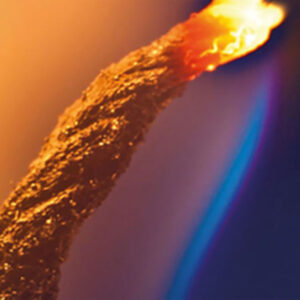“I cannot imagine a better invention than candles that would burn without a need for trimming.”
Johann Wolfgang von Goethe (1749–1832)
Let’s briefly forget about our high-tech world and take a look at the scientific mechanics of a candle flame. When we light a candle wick, the heat of the flame melts the wax. Capillary action carries this liquid wax up the wick and causes it to change into gas as soon as it reaches the end. This releases molecules of hydrocarbon.

Molecules break down into smaller molecules that react with each other and with oxygen in the atmosphere. The hot gas emitting heat from the reaction area heats the solid carbon particles to a glowing incandescence. These carbon particles are what create the pleasant warm, yellow flame of the candle.
Since not all carbon particles burn completely, some residual particles are released. This is why soot (fine carbon particles that didn’t burn) or carbon residues (larger carbon particles that didn’t burn) are formed.
Although no candle flame will ever be completely free of soot, the amount of unburned carbon particles can be minimized by using the best raw materials for candles and wicks that are made or treated to bend and reach the top of the flame where the temperature is highest.



